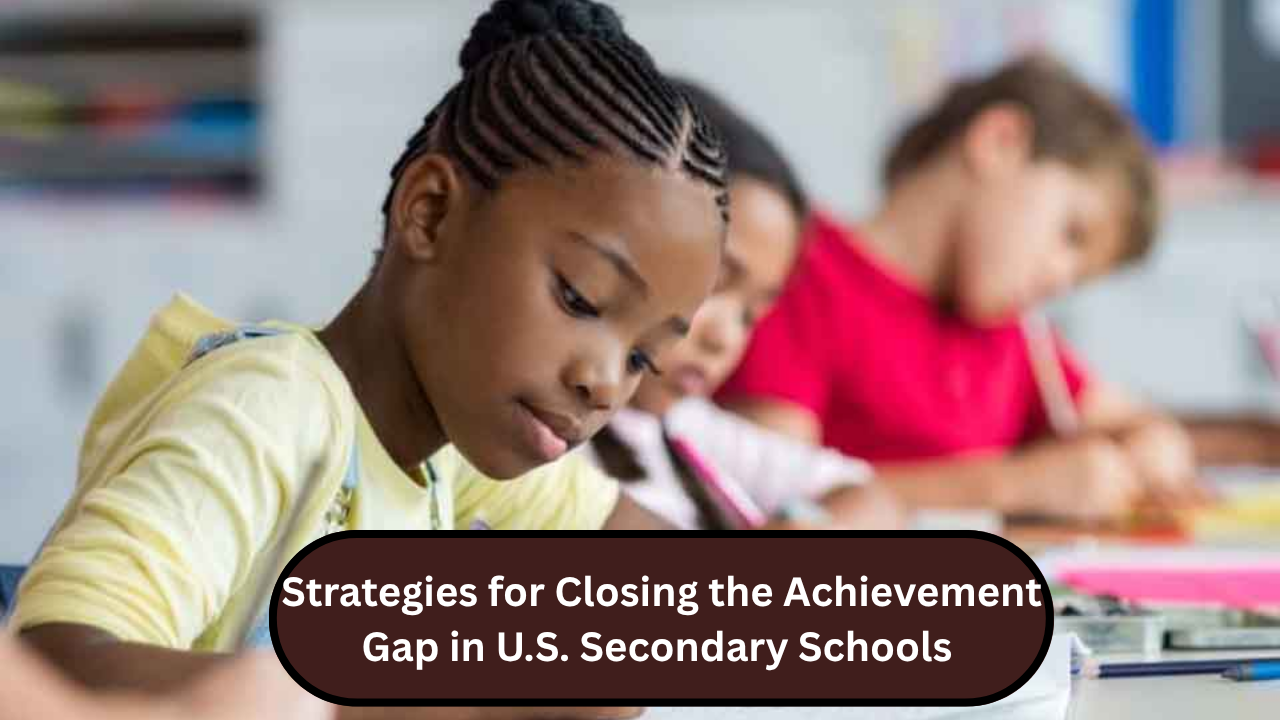The achievement gap in U.S. secondary schools remains one of the biggest challenges facing the education system today. This gap refers to the difference in academic performance between groups of students—especially those defined by race, income, language, or disability. While some students excel, others fall behind due to limited access to resources, support, or opportunities. This inequality not only affects students’ test scores but also their future college and career paths. Addressing this issue is vital to ensuring that every child in America has a fair chance to succeed. In this article, we’ll explore strategies that schools can use to help close this gap and support all learners more effectively.
Focusing on Equitable Access to Resources and Instruction
One of the most important steps in closing the achievement gap is making sure that every student has access to high-quality resources. This includes updated textbooks, well-trained teachers, access to technology, and safe learning environments. Schools in low-income areas often struggle to provide the same level of education found in wealthier districts.
To fix this, education funding must be distributed more fairly across all schools. Additionally, teachers should receive training in culturally responsive teaching methods that recognize and support the backgrounds of diverse student populations. By providing equal tools and inclusive instruction, we give all students a better chance to learn and grow.
Providing Strong Academic and Emotional Support Systems
Academic struggles are not always about ability—sometimes students fall behind due to emotional, social, or personal challenges. To truly close the gap, schools need to build systems that support students both academically and emotionally. This includes tutoring programs, after-school learning opportunities, and access to counselors and mentors.
Early intervention for students who show signs of falling behind is also key. Schools can use test scores and classroom performance to identify these students early and offer them personalized help. When students feel supported and safe, they are more likely to stay motivated and succeed in their studies.
Closing the achievement gap is not an easy task, but it is necessary for building a more just and successful society. Every child, no matter where they live or what background they come from, deserves the chance to reach their full potential. By investing in equitable resources, improving teaching methods, and creating strong support systems, U.S. secondary schools can help bridge this gap. It takes effort from educators, parents, communities, and policymakers to make lasting change. But with the right strategies and commitment, we can give every student a fair shot at success.
FAQ’s:
Q1. What is the achievement gap in U.S. schools?
A1. The achievement gap refers to the difference in academic performance between different groups of students, especially based on race, income, or disability.
Q2. Why does the achievement gap matter?
A2. It affects students’ future opportunities, including access to higher education, jobs, and income. A large gap also reflects unfairness in the education system.
Q3. How can teachers help reduce the achievement gap?
A3. Teachers can use inclusive teaching methods, offer extra help to struggling students, and create supportive classroom environments.
Q4. What role does funding play in the achievement gap?
A4. Schools in poorer areas often have fewer resources. Equal funding can ensure all students get access to quality materials and teaching.
Q5. Can families and communities help close the gap?
A5. Yes. When families are involved in education and communities provide support programs, students are more likely to succeed.
